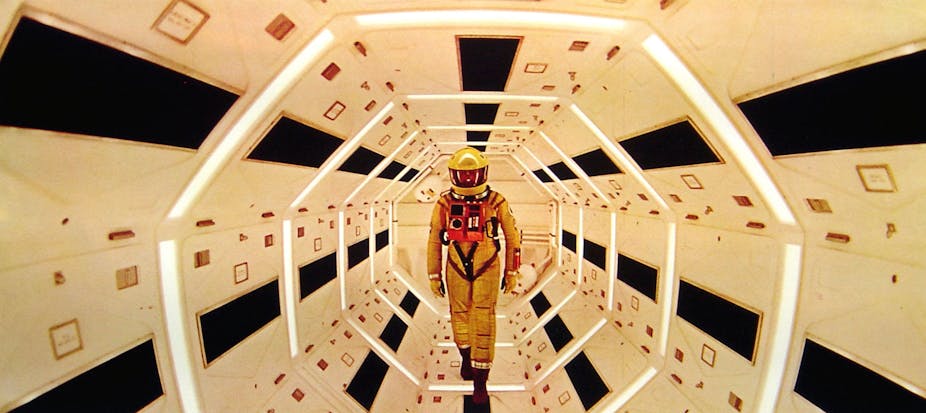Music is an integral part of the movie experience, setting the tone, building emotion, and often becoming as iconic as the visuals themselves. While many memorable film scores are original compositions, some of the most iconic music in cinema comes from public domain works. These timeless pieces of classical music and traditional compositions have been used to enhance some of the most unforgettable moments in film history. Let’s take a look at some of the most iconic public domain music scores used in movies.
"Ride of the Valkyries" – Apocalypse Now (1979)
One of the most recognizable pieces of classical music ever written, Richard Wagner's Ride of the Valkyries is used to powerful effect in Apocalypse Now. In one of the film’s most famous scenes, this triumphant and bombastic music plays as helicopters swoop down on a village during the Vietnam War, creating an eerie contrast between the beauty of the music and the violence of the scene.
Composed in 1856 as part of Wagner’s opera Die Walküre, this piece has become synonymous with cinematic drama, representing both heroism and destruction. Its inclusion in Apocalypse Now helped solidify the track as a go-to for filmmakers when they need a score that evokes grandiosity and power.
"Also Sprach Zarathustra" – 2001: A Space Odyssey (1968)
When you hear the opening notes of Richard Strauss’s Also Sprach Zarathustra, it’s almost impossible not to think of Stanley Kubrick’s 2001: A Space Odyssey. This epic tone poem, composed in 1896, has been etched into film history thanks to its use in the opening scene of Kubrick’s science fiction masterpiece, where it plays over images of the sun rising behind the Earth, symbolizing the dawn of human evolution.
The grandeur and mysticism of Strauss's composition have made it a perfect fit for many moments in film and television, but it is Kubrick’s use of it in 2001 that truly made it iconic.
"Ode to Joy" – Die Hard (1988)
Beethoven’s Ode to Joy, from his Ninth Symphony, is one of the most beloved and recognizable pieces of classical music, and its use in Die Hard is both unexpected and brilliant. While Ode to Joy is typically associated with celebration and triumph, in Die Hard it’s used as the theme for the film’s villain, Hans Gruber, and his band of terrorists as they break into the vault at Nakatomi Plaza.
This juxtaposition of joyful music with the film’s tense action sequences creates a memorable contrast, turning Ode to Joy into a piece that now recalls both holiday cheer and high-stakes heists. Composed in 1824, this public domain classic has transcended its original meaning to become a versatile piece of cinema history.
"The Blue Danube" – 2001: A Space Odyssey (1968)
Stanley Kubrick’s 2001: A Space Odyssey is filled with classical music, and one of its most famous sequences is set to Johann Strauss II’s The Blue Danube. This waltz, composed in 1866, is played during the docking scene between a spaceship and a space station, turning a routine maneuver into a graceful ballet of celestial bodies.
The slow, rhythmic elegance of The Blue Danube contrasts with the cold and futuristic setting, emphasizing the beauty and mystery of space. This pairing of classical music with sci-fi visuals created one of the most iconic cinematic moments of all time.
"Toccata and Fugue in D Minor" – Fantasia (1940)
No discussion of public domain music in film would be complete without mentioning Fantasia (1940), Disney’s ambitious animated film set entirely to classical music. One of the most famous pieces in the film is Johann Sebastian Bach’s Toccata and Fugue in D Minor. This dramatic organ composition, written around 1704, opens the film and sets the tone for the stunning visuals that follow.
Fantasia brought classical music to a wider audience and made pieces like Bach’s Toccata and Fugue synonymous with animated storytelling and vivid imagination. The haunting, complex nature of the piece has made it a favorite for use in films and television when an air of mystery or grandeur is needed.
"The Sorcerer's Apprentice" – Fantasia (1940)
Another standout from Fantasia is Paul Dukas’ The Sorcerer’s Apprentice, a symphonic poem composed in 1897. In the film, it accompanies the now-iconic sequence of Mickey Mouse as a sorcerer's apprentice who loses control of a magical broom. This segment, paired with Dukas’ music, has become one of the most famous scenes in Disney history.
The playful, magical nature of the music perfectly complements the animated action, making The Sorcerer’s Apprentice one of the most memorable uses of public domain music in film. The sequence is a great example of how classical music can be used to tell a story and evoke a range of emotions.
Conclusion: Timeless Music for Timeless Cinema
Public domain classical music offers filmmakers a treasure trove of timeless scores that can evoke deep emotion, build tension, or create contrast. Whether it’s Wagner’s Ride of the Valkyries blaring over the battlefield in Apocalypse Now, or The Blue Danube waltzing through the vastness of space in 2001: A Space Odyssey, these public domain masterpieces continue to enrich the world of cinema.






